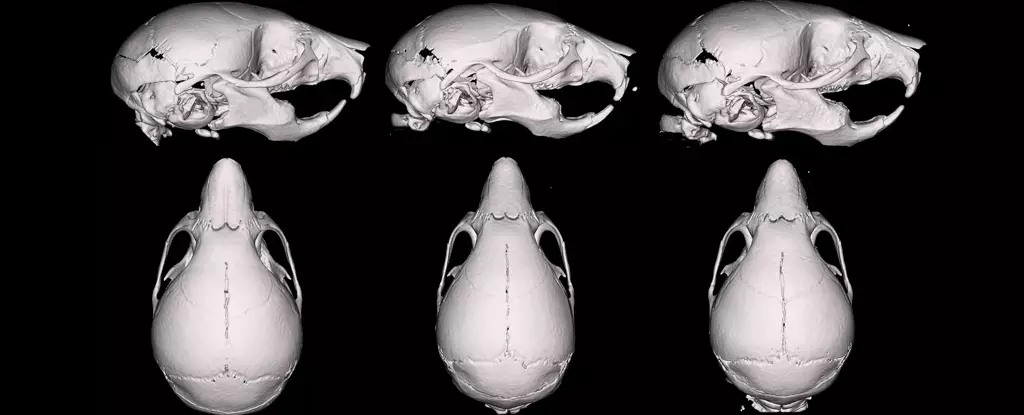The pervasive perception that nicotine-free vaping is a safer alternative is deeply flawed and potentially perilous. As society increasingly adopts these devices under the assumption that removing nicotine equates to reducing harm, emerging scientific evidence challenges this complacency. A groundbreaking study has illuminated a disturbing reality: even vapors devoid of addictive chemicals can adversely affect biological development, particularly during critical periods like pregnancy.
This revelation calls for a critical reevaluation of what “safe” truly means in the context of inhaling aerosolized substances. The common belief that avoiding nicotine guarantees safety is simplistic and shortsighted. Vapes primarily consist of carrier fluids—propylene glycol and glycerol—designed to produce the inhaled vapor. While these ingredients are generally considered safe for topical use or ingestion in small doses, their effects when inhaled consistently, especially by a developing fetus, are far less understood. The recent research underscores that these supposedly inert carriers can interfere with developmental processes, leading to physical anomalies such as narrower skulls and shortened facial features in mouse models.
The implications extend beyond the realm of animal studies, raising profound concerns for human health. Expectant mothers are often told to avoid harmful substances, yet the marketing of nicotine-free vapes as a “safe alternative” conspicuously ignores the emerging evidence of their potential harm. These substances, once thought to be benign carriers, may subtly influence developmental pathways, possibly akin to what is observed in children with craniofacial abnormalities.
Decoding the Surprising Findings of the Study
At the core of this study is a rigorous examination of how carrier fluids alone—without any added chemicals like nicotine or flavorings—impact prenatal development. Led by anatomist James Cray, the research utilized two variations of vape liquids: a balanced 50/50 mixture and a more glycerol-heavy 30/70 formulation. The experimental design involved exposing pregnant mice to these vapors at a controlled rate during their 20-week gestation period, simulating a substantial exposure similar to habitual human vaping.
Contrary to initial expectations, the group exposed to the 30/70 glycerol-dominant mixture showed more pronounced developmental impacts. Their pups exhibited smaller skulls, narrower facial structures, and reduced body weights—alterations that are not trivial cosmetic changes but potentially indicative of underlying developmental disruptions. Such physical traits are comparable with certain craniofacial deformities observed in children, raising important questions about the long-term health implications.
The counterintuitive nature of these findings—that a higher glycerol ratio resulted in greater developmental effects—sheds light on the complexity of inhaled substances. It suggests that the assumption of glycerol as a safer, inert component is flawed. Instead, it may play an active role in disrupting normal growth patterns, possibly through inflammatory pathways or cellular interference during critical phases of development.
Furthermore, the observation that the 50/50 mixture had fewer effects highlights how even subtle variations in chemical composition can dramatically influence biological outcomes. This variability complicates efforts to regulate vaping products, as manufacturers often tweak ingredient ratios to market safer or more appealing products without robust scientific backing.
The Broader Implications for Public Health and Policy
While animal studies present invaluable insights, translating these findings to human health requires caution. Ethical and practical constraints limit direct testing on pregnant women; nonetheless, the evidence from these controlled experiments signals a need for urgent public health interventions.
One of the most troubling aspects of this research is its challenge to the narrative that nicotine-free vaping is effectively risk-free. The assumption that removing the addictive component makes vaping safe is dangerously misguided. The carrier liquids—propylene glycol and glycerol—are not innocuous, especially when subjected to heating, aerosolization, and prolonged inhalation. These processes can result in the formation of new, potentially harmful compounds, further complicating the risk landscape.
The lack of regulation in the vaping industry exacerbates these issues. Without stringent standards for ingredient transparency and quality control, consumers are left vulnerable to unknowingly inhaling substances with developmental risks. This gap in oversight underscores an urgent need for regulatory agencies to scrutinize not just nicotine but all constituents of vaping products, especially those marketed toward pregnant women and young people.
From a societal perspective, these findings demand a paradigm shift in how we speak about vaping. The notion of “safer” alternatives must be reevaluated in light of scientific evidence. More importantly, public health messaging should emphasize the uncertainty and potential dangers of inhaling carrier chemicals—regardless of nicotine content—during pregnancy.
The myth of safety surrounding nicotine-free vapes is unraveling, revealing a complex web of chemical interactions capable of affecting development at a fundamental level. As research advances, it is becoming increasingly clear that inhaling vaporized substances, even without nicotine, carries inherent risks that should not be dismissed or underestimated. Recognizing these dangers is the first step toward safeguarding future generations from preventable developmental harm.

